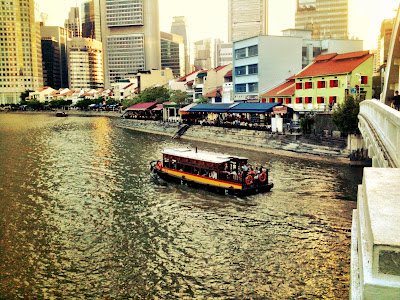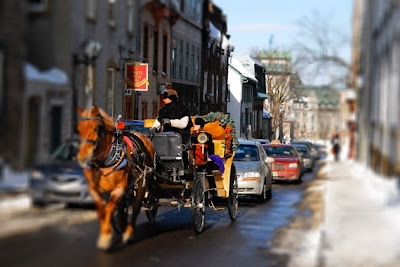 |
SUZHOU » one of over 100 new Chinese cities now being built or planned
|
I
was recently asked this question by a planner when I spent some time in China. His interest stemmed from a long line-up of
master plans he was responsible for delivering, all for new cities. He pointed out that it’s challenging enough
to create a destination character for an existing city, let alone for a city of
several million that hasn’t even been built yet.
This
question thrilled me for two reasons: firstly, destination character is often
overlooked by clients (and quite often their planners) in rapidly developing
countries like China. And secondly, when
destination character is a consideration, it’s usually code for “design for me
a new industrial / tourism / technology city that is progressive like other world-class cities.” Although I understand the desire to be progressive,
this only skims the surface of what destination character can deliver.
I
believe that for a new city to take off and compete with other cities it has to
be more than just modern – it needs to have a distinctive character unlike no
other. This should be encapsulated in
the destination brand - designed at the beginning, and not at the end, of the
master planning process. And so my
response to the question was that not only is it possible to design destination
character for a new, unplanned city, but the fact that a city isn’t yet
developed provides an enormous opportunity – to create your new destination
brand from scratch, and to incorporate the brand into every design aspect of
the master plan.
Whilst
there are many components to a destination brand (see the Gold Coast brand
summary below as an example), there are two aspects of destination branding
that I think have particular relevance to planners – Destination Personality
and Destination Experiences.
Destination Personality
If
you want to be noticed at a dinner party, you need to have a distinctive
personality. People will be captivated
by your colourful stories, your style, your attitude, and behavioural nuances. Likewise, a city that wants to attract
attention needs to have its own charming personality that sets it apart from
other destinations. Although destination
character develops over time, a branding expert can help develop an appropriate
personality from the outset which planners can incorporate into design aspects
such as landuse mix, choice of recreational uses, signage, transportation
modes, methods of activating open spaces etc.
Consider, for example, the differences between two iconic cities with
completely different personalities – New York and Paris.
- New York: exciting, provocative, slightly neurotic
- Paris: romantic, stylish, authentic
Both
cities share similar functional attributes, but the delivery of these functions
reflects their opposing personalities.
Destination Experiences
Although
a new city might have a functional theme based on a key economic driver (e.g.
technology, industrial park, tourism etc), as planners we need to remember that
it’s not what jobs people do in that city that define the destination
character, it’s how people live their lives and how they interact with the
city, and with each other. Imagine
you’re thinking of relocating to a new city.
Apart from the functional reasons of, say, a job offer, what are the key
deciding factors? More often than not,
it’s considerations like:
- Are there enough things to see and do / places to visit in my spare time?
- Are there many opportunities for making new friends?
- Will I find enough interesting places to spend time with my friends or family?
As
planners, we have enormous opportunities to creatively inject the destination
brand personality into each of these touch points, so that the collective
experiences of the city’s residents and visitors are reflective of a city with
a compelling, exciting and distinctive personality.
To
illustrate how the brand personality and destination experience can be
delivered through specific design features, I’d like to showcase three examples
which I’ll share over the next few blog posts.
The first example is outlined below.
Case study #1: GEELONG,
Victoria, Australia
Description: Heritage seaside port town, known for being
home to car manufacturer Ford Australia and also the Geelong Football Club,
nicknamed The Cats.
Destination personality: Optimistic, relaxed, proud, unpretentious
Iconic destination
experiences: Geelong is popular for its historic
foreshore. Tourist and recreational
facilities are clustered along the Waterfront Geelong (revitalisation project
during the 1990s), and include: The Baywalk Bollards | Yarra Street Pier |
Cunningham Pier | Steampacket Quay | the Carousel Pavilion | The Royal Geelong
Yacht Club | popular swimming and recreation area at Eastern Beach.
Distinctive design features
that reflect the destination personality:
What sets Geelong
apart from other heritage seaside towns is not just the concentration of recreational
foreshore facilities, but most notably, the famous local installation art known
as the Baywalk Bollards. Created by local artist Jan Mitchell in the
mid 1990s, this themed series features over 100 colourfully-painted sculptures
depicting famous local characters and events.
The bollards are cleverly sited in the most unexpected of places all along
the waterfront, and are a highly visual medium for telling the story of
Geelong. Locals proudly identify with
the artwork, and visitors are fascinated by these characters and the stories
behind them. Each piece is sculpted from
huge wooden pylons, many recovered from the Yarra Street Pier which was
destroyed by fire in the 1980’s and later removed.
Some
of the memorable historic characters featured include former Prime Minister of
Australia John Howard, explorer Mathew Flinders overlooking the bay he
discovered in 1802, the historic Geelong Footballer near the old Hi-Lite Park
site and various sea captains and the rustic fisherman at Fisherman’s Pier.

The
popularity of this installation art series is a testament to the distinctive destination character of Geelong – a city that is optimistic, relaxed, proud,
and unpretentious.
This is the first of a three-part blog, with two
more posts to uploaded over the coming weeks.
Click on any of the “subscribe” links if you’d like to be informed of when
the next post is uploaded.






















